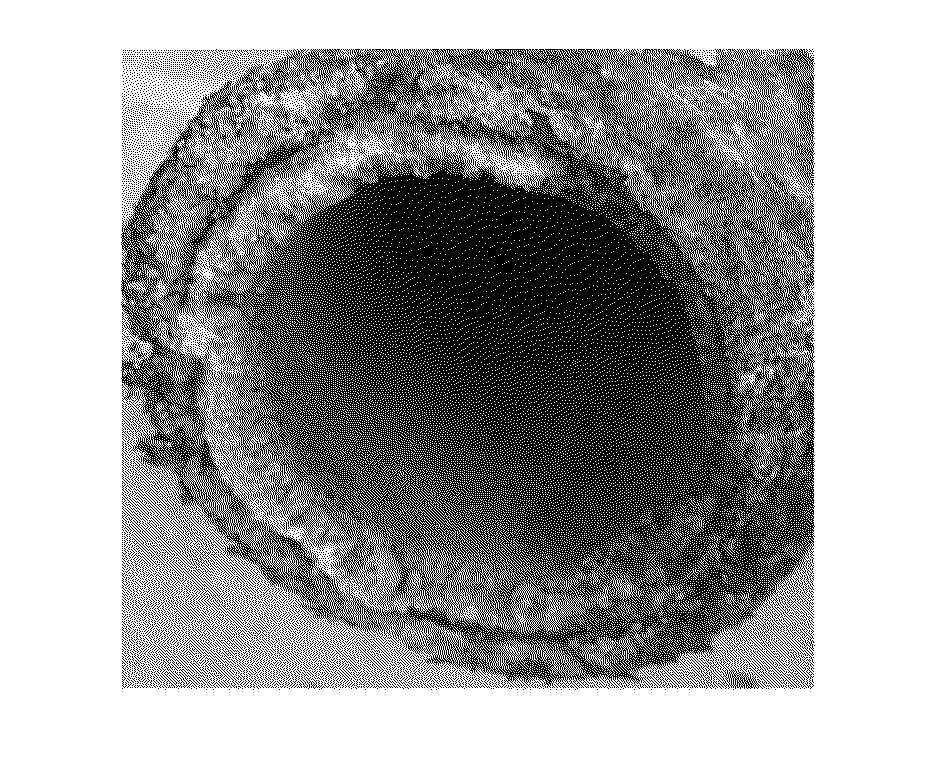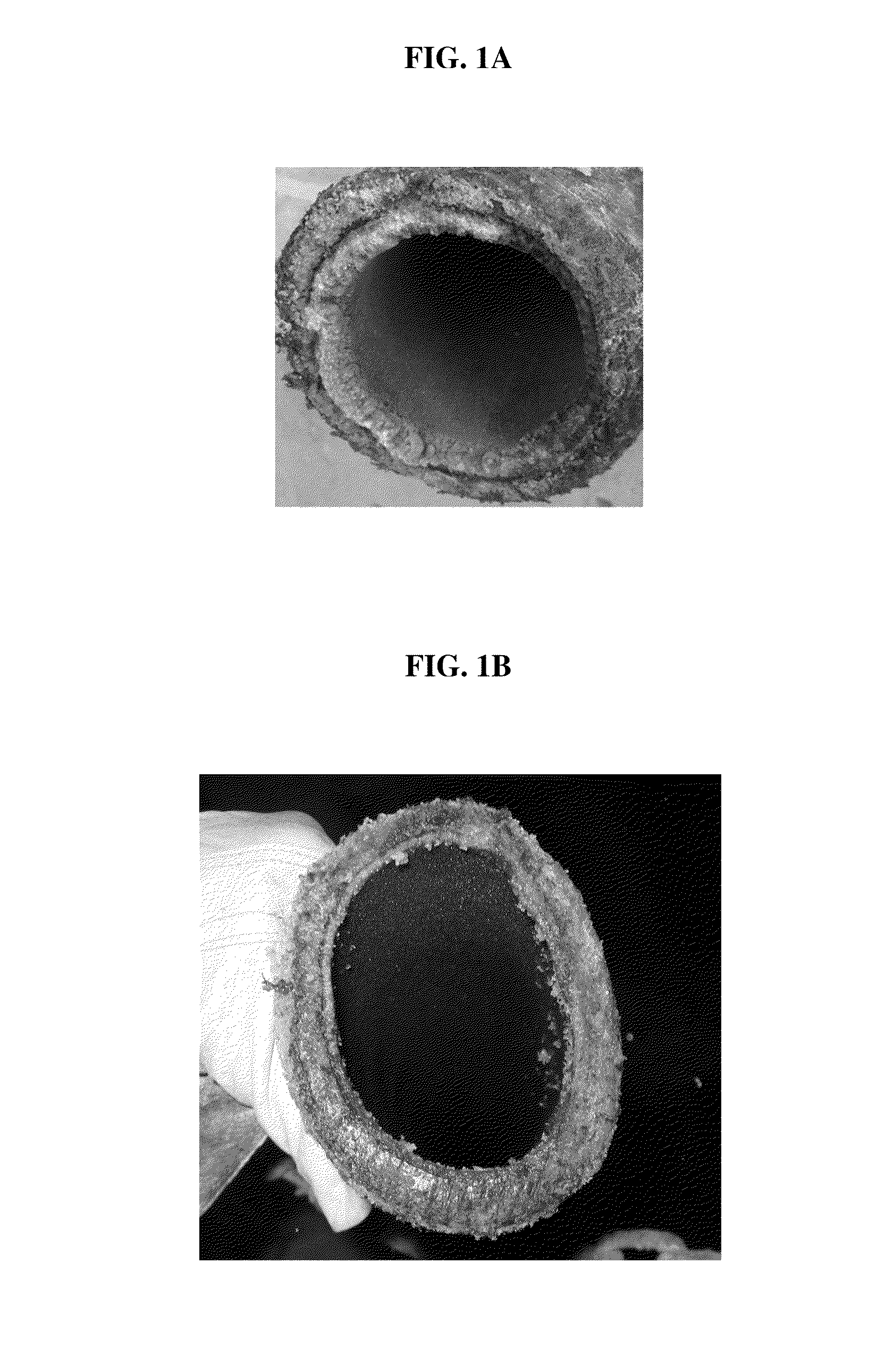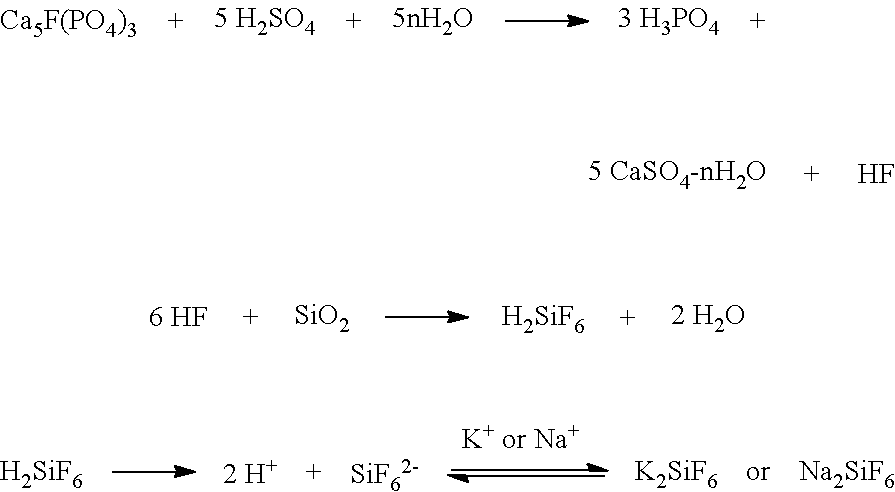Process and Reagents for the Inhibition or Reduction of Scale Formation During Phosphoric Acid Production
a technology of phosphoric acid production and reagents, which is applied in the direction of phosphoric acid, inorganic chemistry, chemistry apparatus and processes, etc., can solve the problems of scale inhibition reagents that scale inhibition reagents are difficult to develop, and there is little information addressing the scale issue of phosphoric acid plant in an industrial setting, so as to reduce or eliminate the scale in the wet-process phosphoric acid production stream, reduce or even completely preven
- Summary
- Abstract
- Description
- Claims
- Application Information
AI Technical Summary
Benefits of technology
Problems solved by technology
Method used
Image
Examples
examples
[0089]The following examples are provided to assist one skilled in the art to further understand embodiments of the present invention. These examples are intended for illustration purposes and are not to be construed as limiting the scope of the embodiments of the present invention or the claims appended hereto.
[0090]Phosphoric acid solutions used for reagent testing are obtained from phosphoric acid plants located in Canada (Plant A); Belgium (Plant P); and Florida (Plant M) at 28%, 42%, 52% or 69% P2O5. ICP and XRD analysis shows the crude phosphoric acids differ greatly in their metal components, and this sometimes leads to difficulty in forming scale within a reasonable period. Accordingly, the scale formation is sometimes induced with salts. In some cases, 0.1% to 10% NaCl, KCl or MgCl2 salts are added to induce particular scale formation. These crude samples contained 28% and 69% P2O5 from Plant A, 30% and 54% P2O5 from Plant P and 30% P2O5 from Plant M. These samples are used...
example a
Scale Initiation
[0100]Four jacketed-beakers are positioned and clamped on top of an aluminum tray filled with DI-water over the four corners of the hot plates. The beakers are connected in parallel in respect to the water flow from the heating circulator. Phosphoric acid (synthetic or crude plant acid sample at 28%) is mixed well before evenly dividing into 4 beakers (450-700 g). The beakers are mixed simultaneously by stir bars at the same speed. The hot plate is turned on to heat the water bath to a temperature of about 90° C. After the mixing in each beaker is stabilized, the power of the heating circulator is started. Once the temperature of the circulator reads about 50-60° C., reagents are then added to the individual beaker (usually to three of them with remaining one as control).
[0101]The four pre-weighed U-shape tubes with series connection to tap water are then submerged into corresponding beaker. Once the circulator reads about 75° C., the tap water is turned on to cool t...
examples 1-30
[0104]Reagents can be either purchased from commercial sources or synthesized in the lab.
[0105]The reagents are all dissolved in water to prepare for 3% solution before the test.
There are 10 functional organic compounds (A1 to A10), 7 polymers (B1 to B7) and 7 amine-type compounds (C1 to C7) listed below. In order to test their blend property, random combination and ratios of series A, B and C were generated. The examples of reagents suitable in the DOE are listed in Table 1.
TABLE 1Examples of Reagents and their categorization for the DOE blendoptimization experimentsFunctional organicamines andReagentcompoundsPolymerscyclic aminesnumberABC1catecholPEIvinylimidazole21-Hydroxyethane-SUPERFLOC ®ethylimidazole(1,1-di-phosphonicC573acid) (HEDP)3sulfosuccinic acidSUPERFLOC ®ethylpyridine(AeroDri 104)C587;Poly(diallyldi-methylammoniumChloride43-SulfopropylPolyacrylic acidEthylpyrazineacrylate potassiumsalt54,5-CYANAMER ®2-amino-4-Dihydroxynaphthalene-P-70methylpyrimidine2,7-disulfonicPoly...
PUM
| Property | Measurement | Unit |
|---|---|---|
| temperature | aaaaa | aaaaa |
| time | aaaaa | aaaaa |
| time | aaaaa | aaaaa |
Abstract
Description
Claims
Application Information
 Login to View More
Login to View More - R&D
- Intellectual Property
- Life Sciences
- Materials
- Tech Scout
- Unparalleled Data Quality
- Higher Quality Content
- 60% Fewer Hallucinations
Browse by: Latest US Patents, China's latest patents, Technical Efficacy Thesaurus, Application Domain, Technology Topic, Popular Technical Reports.
© 2025 PatSnap. All rights reserved.Legal|Privacy policy|Modern Slavery Act Transparency Statement|Sitemap|About US| Contact US: help@patsnap.com



